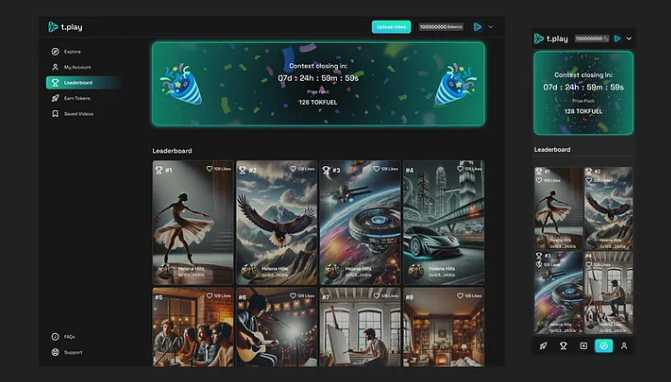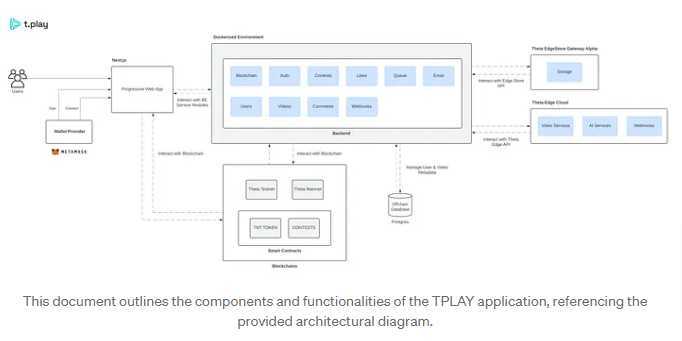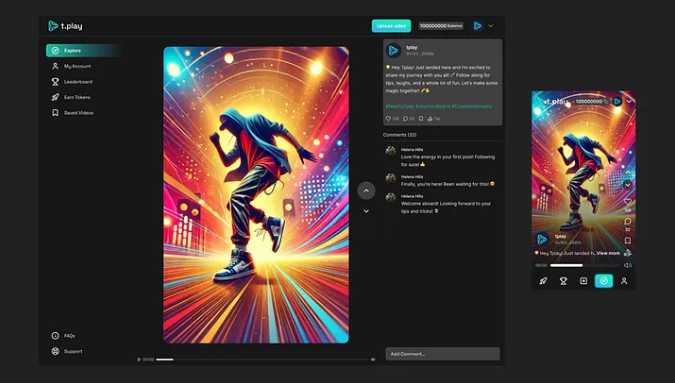Another successful Theta Hackathon has been completed, with a brilliant group of winning projects in the AI, video, and gaming sectors! We thank all the awesome developers and teams that submitted projects to this edition of Theta Hackathon, helping to build the decentralized future of AI in media and entertainment. In the coming weeks, we’ll be highlighting all the top projects.
Next up is the Video / Rendering track winner, TPLAY.
TPLAY is a social network for sharing videos, built on Theta Network. It lets users upload or create AI-generated videos, participate in contests, and win exciting prizes. This innovative platform transforms the way users create, share, and interact with video content, offering a unique blend of technology and creativity. Join in this new era of decentralized video sharing and discover the endless possibilities with TPLAY. It’s as simple as its tagline: Share. Compete. Win.
Platform Description
TPLAY is not just another video-sharing platform; it is a dynamic ecosystem that empowers users to take full control of their content and its potential. With TPLAY, you can:
Share Your Videos:
- Upload and share your video content securely and efficiently.
- Leverage decentralized storage solutions to ensure your content is always accessible and tamper-proof.
Generate Videos with AI:
- Utilize advanced AI tools to create captivating video content effortlessly.
- Enhance your videos with AI-generated effects, edits, and enhancements, making your content stand out in the crowd.
Win Prizes Based on User Engagement:
- Participate in weekly contests where your video content competes for audience engagement.
- Earn rewards from a base prize pool funded by TPLAY, plus additional user subscription fees for contest entry.
- Engage your audience and climb the leaderboard to win exciting prizes and gain recognition.
Use Interactive and Engaging Features:
- Like, comment, and share videos within the community to drive engagement and support your favorite creators.
- Receive real-time updates and notifications about contest standings, video processing, and more.
- Store video cover images securely with Theta Edge Store, making your content easily retrievable and visually appealing.

Technical Overview
The application architecture leverages modern web technologies and integrates with the Theta Network blockchain for various functionalities.
User Interaction:
- Users access the TPLAY web application through a browser.
- Users connect their decentralized wallet (e.g., MetaMask) to authenticate and interact with the platform.
Video Upload and Processing:
- Users upload videos through the web application.
- The web application sends the video data to the backend, which queues the video for processing.
- Video Services handle the processing and storage of video content on the Theta Edge Network.
Blockchain Interactions:
- The web application interacts with deployed smart contracts on the Theta Network for handling tokens and contests.
- TNT TPlay Token transactions are facilitated for ecosystem interactions.
- Contest smart contracts manage contest entries, prize pools, and reward distribution.
Data Storage:
- User and video metadata are stored in a PostgreSQL database.
- Video cover images are stored in the Theta Edge Store for decentralized access and retrieval.
AI and Webhook Services:
- AI services generate video content as needed.
- Webhook services handle real-time updates and notifications related to video processing and contests.

Future planned improvements to TPLAY include introducing more sophisticated AI tools for video creation and enhancement, establishing a DAO where users can propose new features and vote on platform changes, a Video Studio Creator which will be a powerful tool that allows users to edit, enhance, and generate videos with ease, and transitioning to a fully decentralized storage solution, ensuring complete security, transparency, and user control over data.
Congratulations Matteo, Dario, Francesco C., and Francesco M., and thank you for your contributions to the Theta Ecosystem!






























